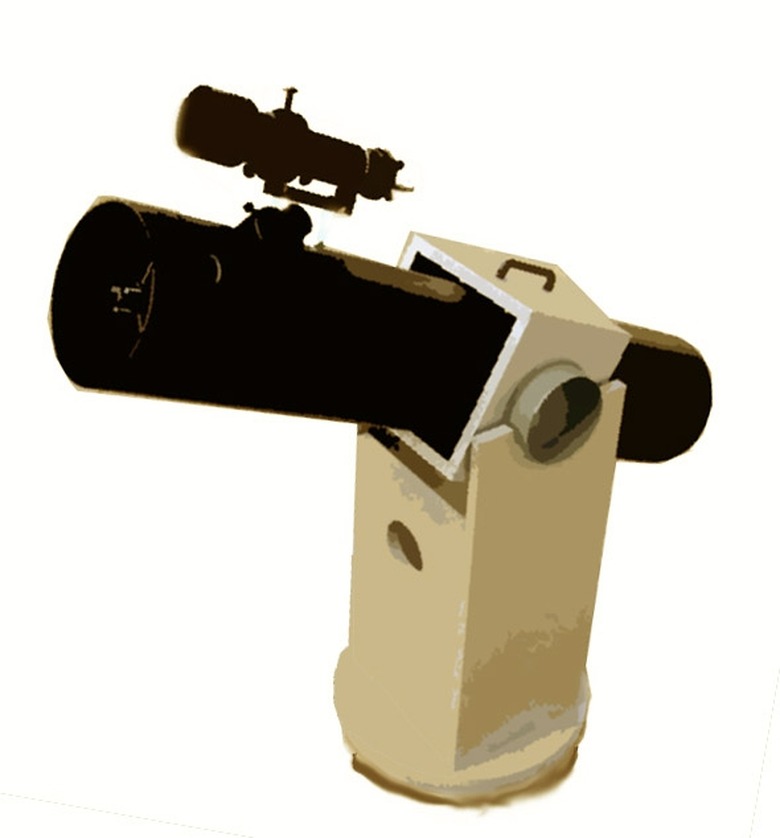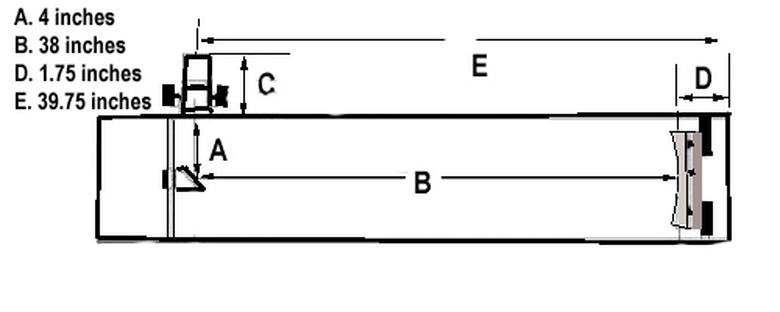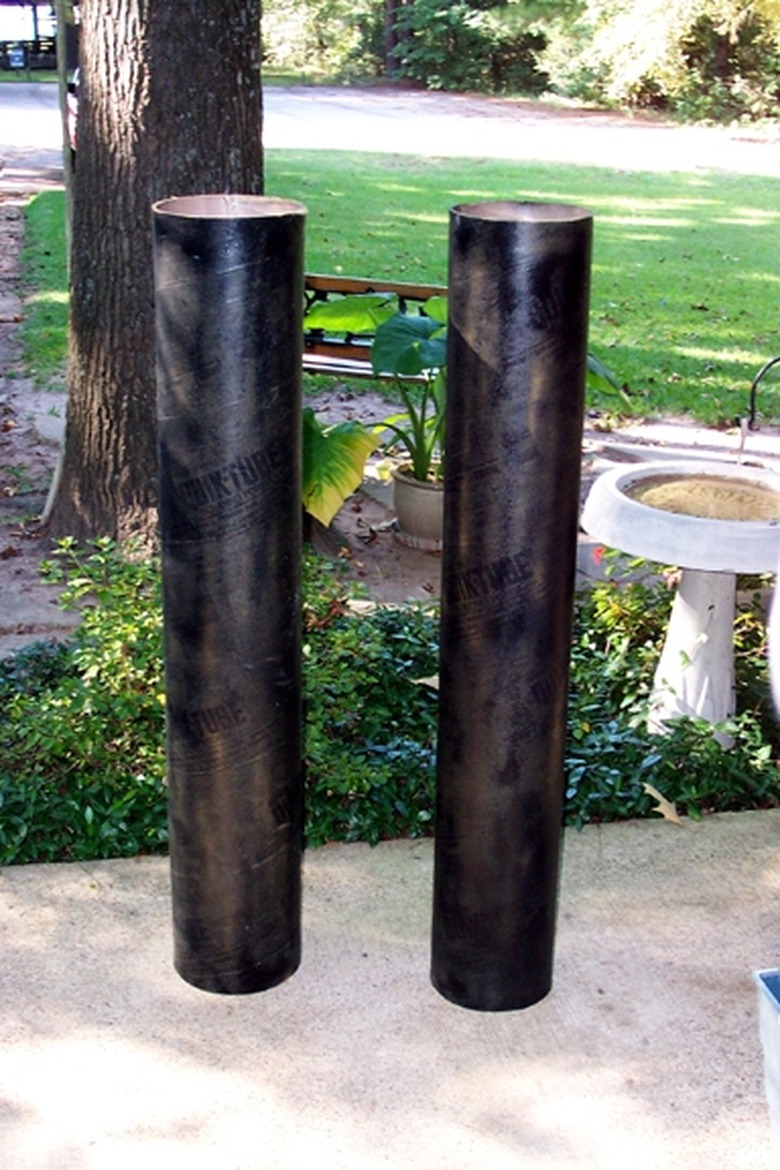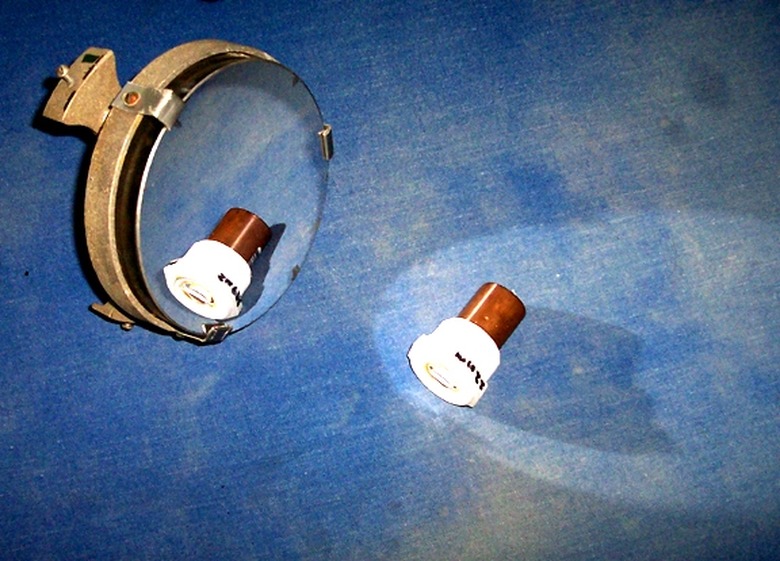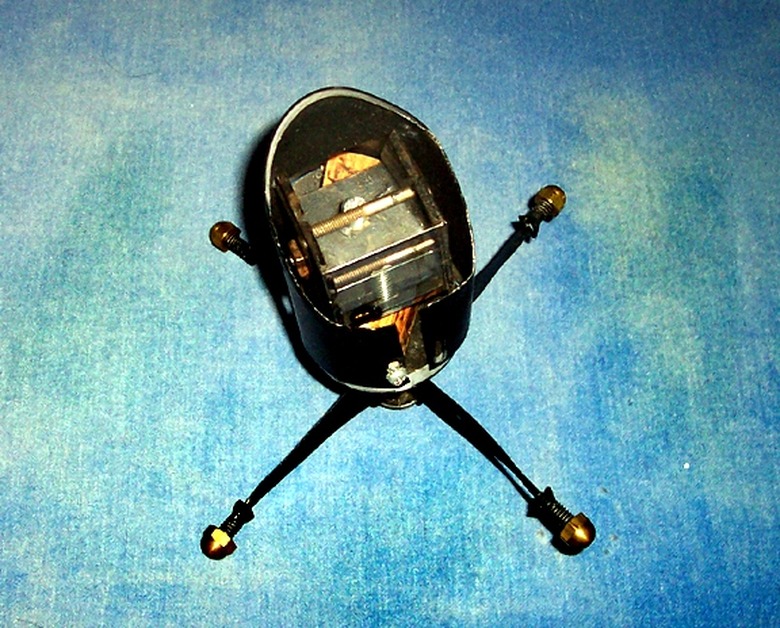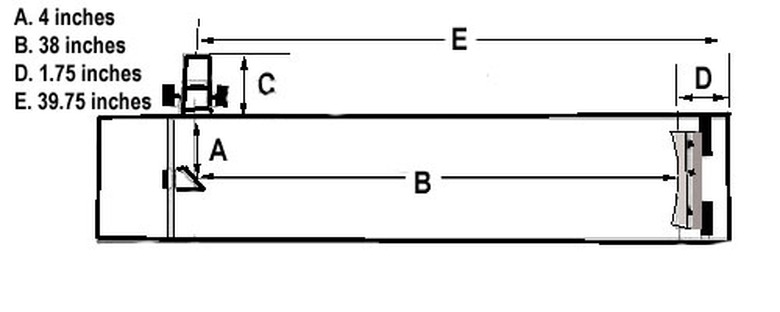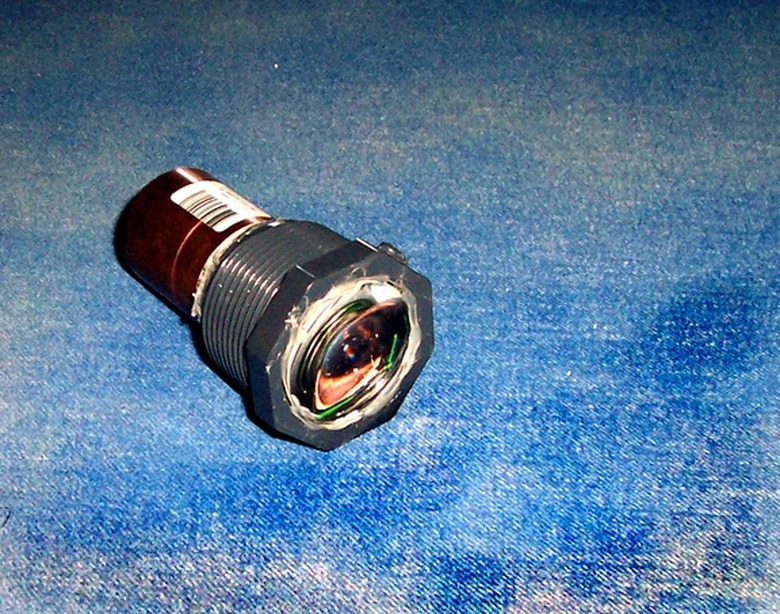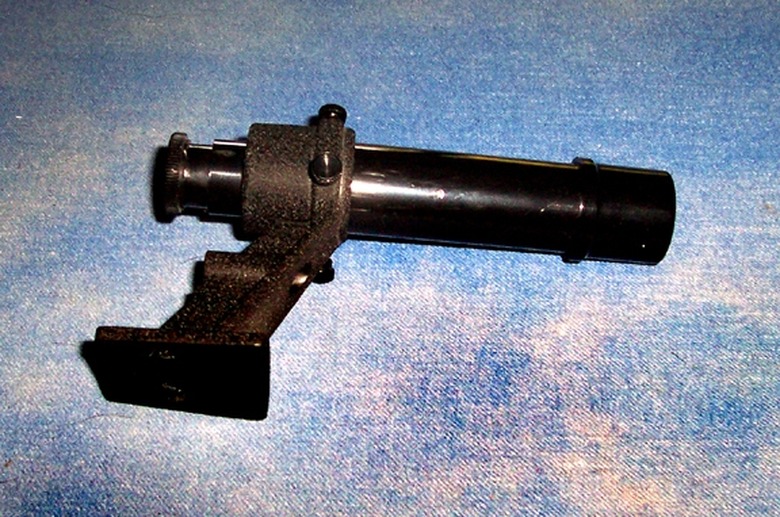How To Make A Homemade Telescope
Galileo made the first homemade telescope from two lenses and a leather tube. Over time, amateur astronomers have led the way in developing new techniques and ideas for building telescopes. Most serious amateurs attempt a home-built scope at some point, like a simple reflector telescope such as described here.
Step 1
Prepare a drawing of the telescope to help figure out the spacing of the three primary optical elements–the mirror, the diagonal and the eyepiece. In this example we will use a 42-inch focal length mirror, 6 inches in diameter. The radius of the 8-inch outer diameter tube is 4 inches. Subtract 4 inches from the 42-inch focal length and you have 38 inches. Space the surface of the primary mirror 38 inches from the center of the diagonal, so that the distance from the surface of the mirror to the outside of the eyepiece hole is 42 inches.
Step 2
Cut the sonotube as long as the distance from the base of the cell on which the mirror is mounted to the edge of the mirror, plus the distance from the mirror to the diagonal, plus the depth of the spider and diagonal mount, plus a couple of inches. Spray the inside of the tube with flat, non-reflective black paint.
Step 3
Mount the mirror to the cell follow package instructions, then mount the cell at the base of the sonotube by drilling holes in the tube to match the mounting screws. Install the mounting screws and tighten to center the cell.
Step 4
Mount the spider in the opposite opening of the scope that points toward the stars. The diagonal mounts on the spider. To position the spider, figure the distance (in this case 38 inches) from the mirror to the center of the diagonal. Measure the distance from the center of the diagonal mirror to the screws in the four legs of the spider. Add the distance from the surface of the mirror to the base of the sonotube and you'll have the distance of the spider leg screw holes to the base of the sonotube. Cut a slot-shaped hole for each spider leg, evenly spaced around the top end of the tube. The spider screws adjust forward and back to center the diagonal.
Step 5
Drill a hole in the tube perpendicular to the center of the diagonal mirror. To find the center of hole, add the distance from mirror to diagonal to the depth of the cell. Drill the width of the eyepiece mounting tube.
Step 6
Adjust the mirror and diagonal by looking through the empty focuser hole and lining up the diagonal and primary so that you see a centered image of the sonotube opening in the eyepiece hole. Screw the focuser in place on the outside of the tube. Place the eyepiece in the focuser.
Step 7
Screw the finder scope mount to the tube so that it is lined up parallel with the tube, easy to reach and not obstructed by the mount or the eyepiece.
Things Needed
- Telescope primary mirror
- Sonotube with a diameter 1 to 2 inches larger than the mirror
- Mirror cell mounting bracket
- Diagonal mirror mounted on spider the size of the sonotube
- Focuser
- Finder Scope
- Eyepiece to fit the focuser
- Drill
- Tape measure, marker and straightedge
TL;DR (Too Long; Didn't Read)
Measure twice, cut once.
Warning
Be careful handling the mirror. Fingerprints can severely degrade the image. Cleaning the mirror and lenses can scratch delicate optics. Use lens cleaner and special lens cloths.
Don't clean too frequently. Optics can tolerate dust better than scratches.
References
Cite This Article
MLA
King, Tom. "How To Make A Homemade Telescope" sciencing.com, https://www.sciencing.com/make-homemade-telescope-5497534/. 24 April 2017.
APA
King, Tom. (2017, April 24). How To Make A Homemade Telescope. sciencing.com. Retrieved from https://www.sciencing.com/make-homemade-telescope-5497534/
Chicago
King, Tom. How To Make A Homemade Telescope last modified August 30, 2022. https://www.sciencing.com/make-homemade-telescope-5497534/
